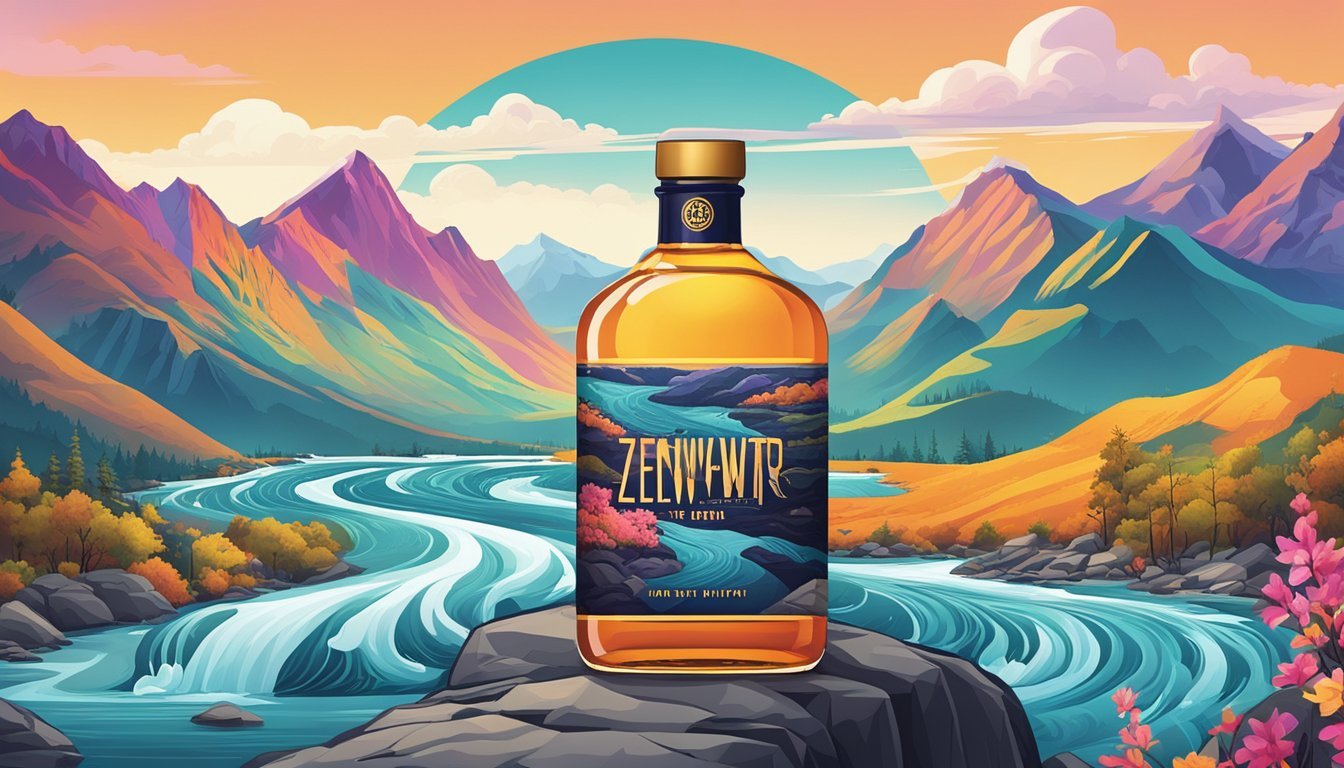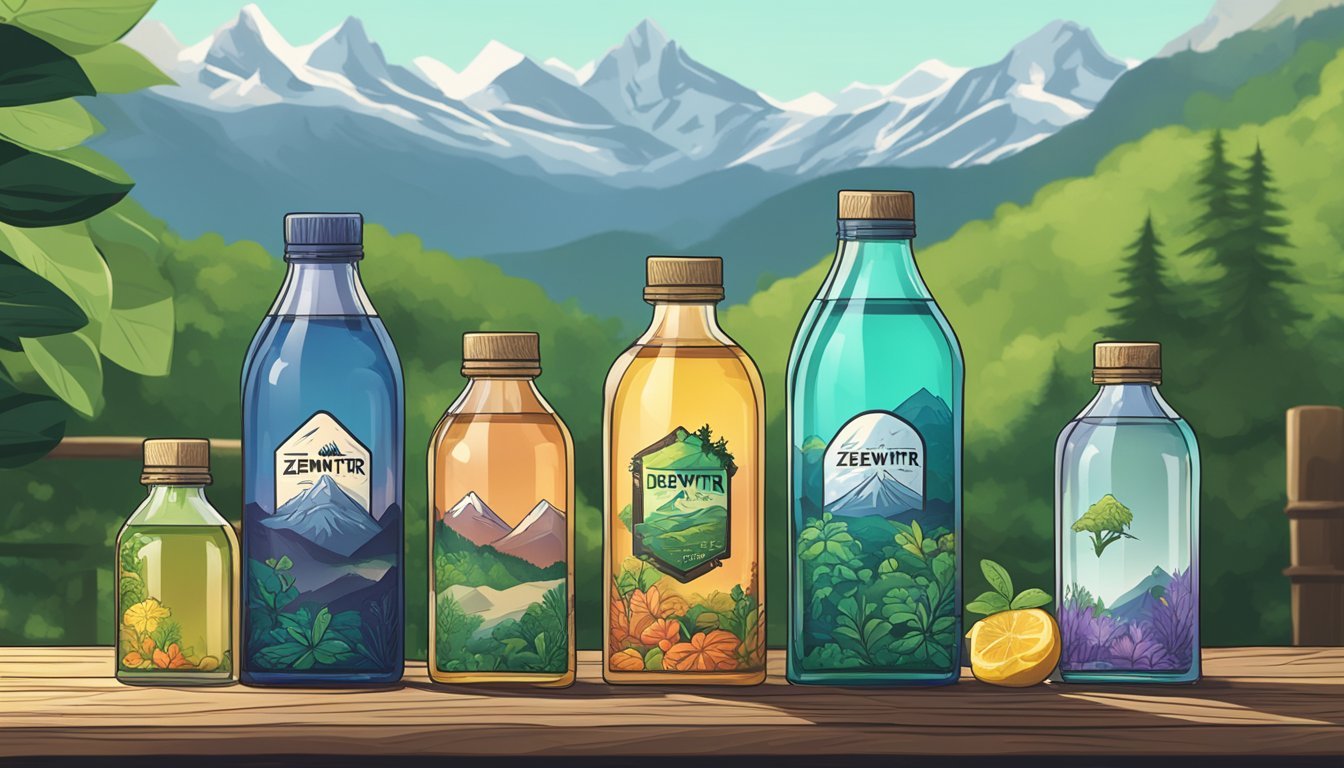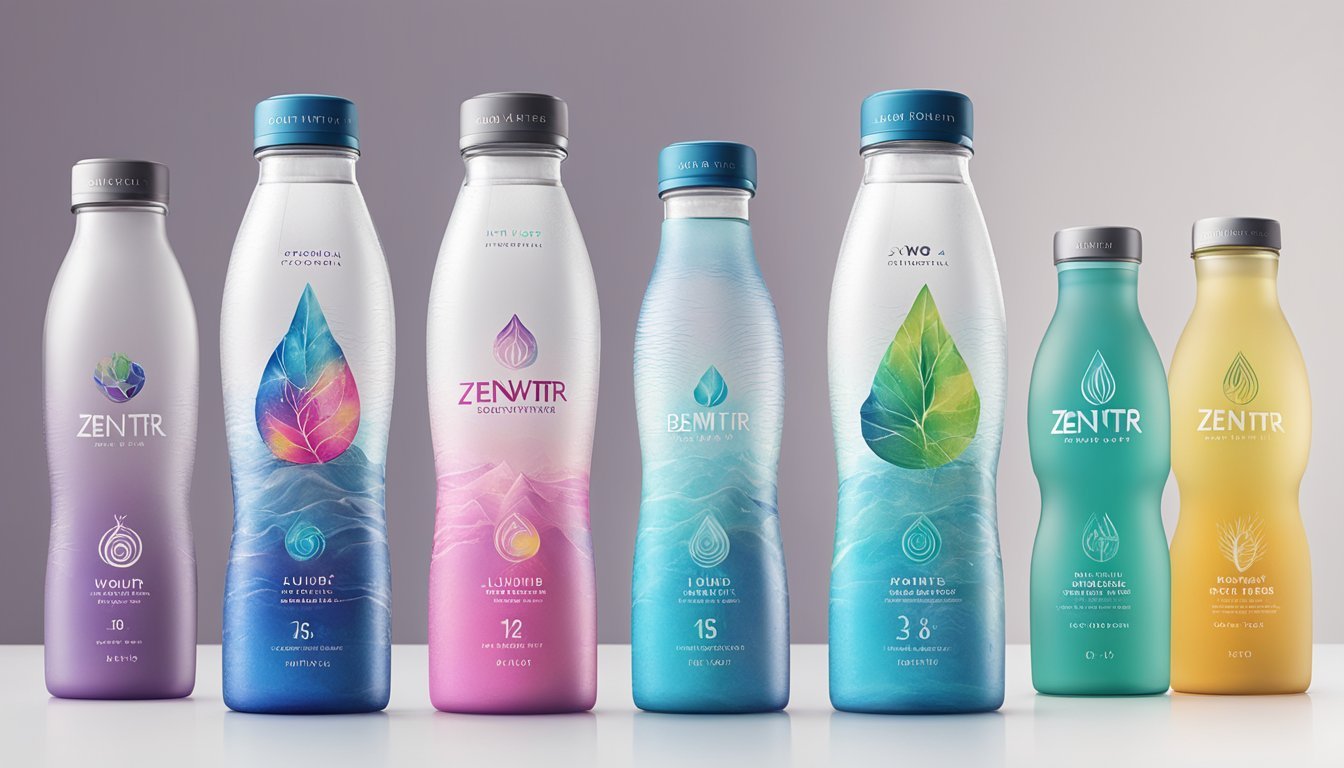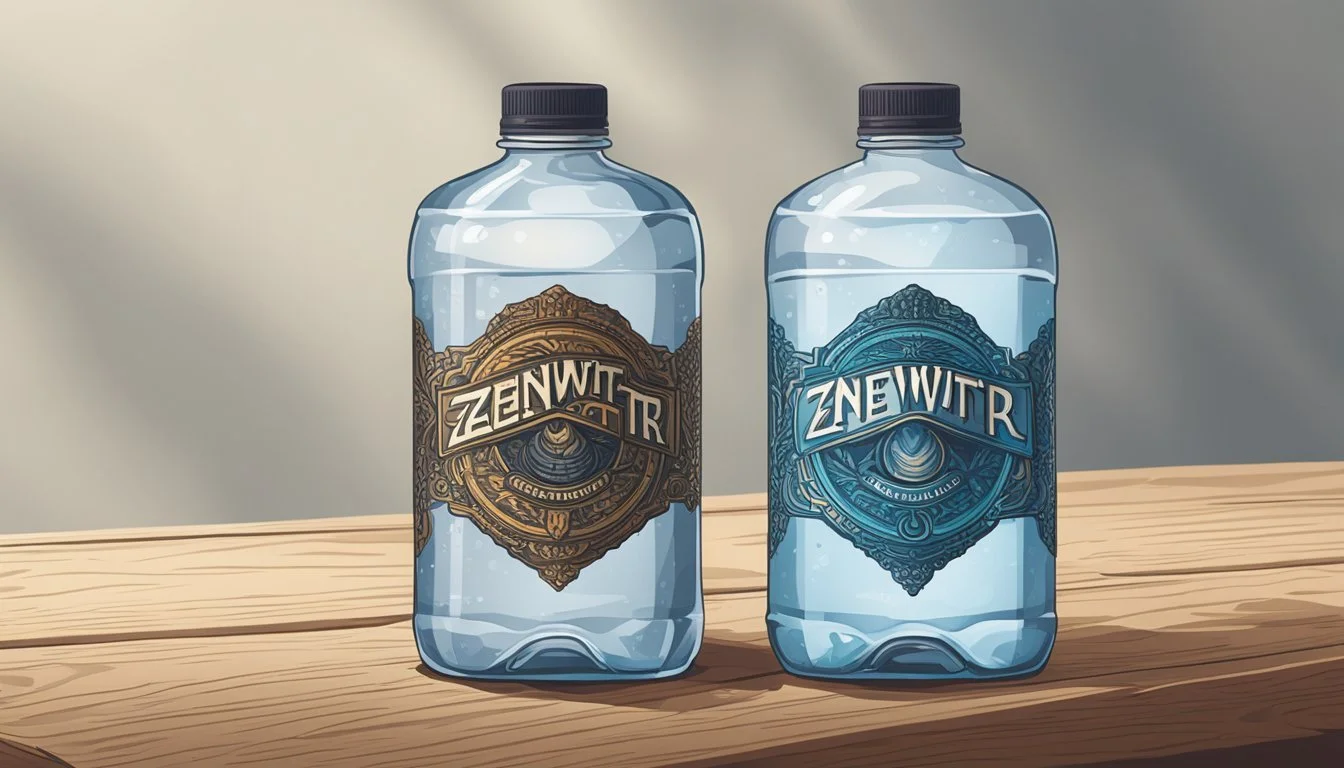Liquid Death vs. Zenwtr
Which Bottled Water Reigns Supreme
When it comes to choosing the best bottled water, the competition between Liquid Death and ZenWTR is fierce. Liquid Death stands out with its unique packaging, opting for aluminum cans that are both eco-friendly and visually striking. This choice not only appeals to environmentally conscious consumers but also ensures the water remains fresh and free from plastic contaminants.
On the other hand, ZenWTR leverages its natural alkalinity with a balanced pH level of 9.5, appealing to health enthusiasts who prioritize the benefits of alkaline water. Its vapor-distilled process ensures purity and a clean taste, coupled with a variety of bottle sizes that cater to different hydration needs.
Both brands offer distinct advantages catering to different consumer preferences. For those prioritizing environmental sustainability and innovative branding, Liquid Death may be the preferred choice, while ZenWTR's natural alkalinity and purity make it an excellent option for health-conscious individuals.
Background of the Brands
Liquid Death and ZenWTR have distinct origins and missions. Liquid Death focuses on unconventional branding and sustainability, while ZenWTR emphasizes its environmental pledges and commitment to using recycled materials.
Liquid Death: Brand Origins and Mission
Liquid Death was launched with a bold mission to bring attention to environmental issues through an edgy branding approach. The brand, known for its slogan "death to plastic," offers water in aluminum cans, which are more recyclable than plastic bottles.
The unconventional name and marketing strategy have set Liquid Death apart in the crowded bottled water market. Emphasizing a rock-and-roll aesthetic, they target consumers who are environmentally conscious yet drawn to the brand's rebellious image.
ZenWTR: Vision and Environmental Pledge
ZenWTR, created by Lance Collins, aims to save the oceans through its commitment to sustainability. The brand uses 100% post-consumer recycled plastic in its bottles, sourced specifically from ocean-bound plastic waste.
ZenWTR’s natural alkalinity sets it apart from other alkaline water brands that use artificial additives. The company focuses on reducing ocean plastic pollution and promoting environmental wellness. This vision resonates with consumers who prefer eco-friendly products and are mindful of their environmental impact.
Bottle Design and Materials
Both Liquid Death and ZenWTR offer uniquely designed packaging, utilizing different materials to meet their environmental goals and consumer preferences. This section highlights the distinctions in their bottle designs and the environmental impacts of their chosen materials.
Aluminum Cans Vs. Plastic Bottles
Liquid Death opts for aluminum cans which are known for being infinitely recyclable. Aluminum requires significantly less energy to produce compared to plastic, making it a more sustainable option. The brand's design also differentiates it from traditional bottled water, featuring edgy and eye-catching graphics.
ZenWTR primarily uses plastic bottles made from 100% recycled ocean-bound PET (rPET) plastic. Although plastic can pose environmental risks, the use of rPET helps reduce waste in oceans. ZenWTR is also expanding to offer aluminum and glass bottles to cater to a broader audience and provide more recycling options.
Environmental Impact of Packaging
Aluminum's environmental benefits include its infinite recyclability and lower energy consumption during production. Aluminum cans can be recycled numerous times without degradation. This characteristic significantly reduces the environmental footprint, especially when recycling rates are high.
On the other hand, plastic bottles made from rPET divert waste from oceans and landfills. Using ocean-bound plastic helps in combating marine pollution. Recycling PET, while not as sustainable as aluminum, still offers a reduction in carbon footprint when compared to producing new plastic. ZenWTR’s commitment to using 100% rPET emphasizes the importance of recycled materials in reducing plastic pollution.
In contrast to plastic and aluminum, glass bottles are robust and can be reused multiple times, but they are heavier and require more energy to transport. Glass is fully recyclable, but the energy-intensive production and transportation make it less favorable compared to aluminum and rPET in some contexts.
Water Sources and Purification
To assess the water sources and purification methods of Liquid Death and ZenWTR, it is essential to examine where the water originates and the processes it undergoes to ensure purity and quality. High-quality bottled water should have a clear origin and rigorously applied purification processes.
Sourcing: Mountain Water and Reverse Osmosis
Both Liquid Death and ZenWTR pride themselves on sourcing their water from underground aquifers, ensuring a steady supply of pristine water. Liquid Death sources its water from the Austrian Alps, renowned for its pure mountain water. ZenWTR draws water from a sustainable underground aquifer, ensuring it benefits from natural filtration.
ZenWTR also undergoes reverse osmosis, a detailed purification process removing impurities to enhance water quality. Reverse osmosis not only ensures purity but also maintains the water's natural alkaline properties, crucial for consumers seeking alkaline water for its health benefits.
Liquid Death's Austrian Alps Water
Liquid Death sources its water from a deep underground mountain source in the Austrian Alps. This location is protected by hundreds of feet of stone, ensuring the water remains untouched by surface contaminants.
Post-extraction, the water undergoes minimal processing to preserve its mineral content, maintaining its natural taste and benefits. The water is then bottled straight at the source in air-tight aluminum cans, preventing any external contamination during transportation and storage. This method ensures that consumers receive water with its natural properties intact.
ZenWTR's Purification Process
ZenWTR emphasizes a meticulous purification process to ensure the highest quality of water. Initially sourced from a sustainable underground aquifer, the water undergoes a multi-step filtration process that includes reverse osmosis.
This process removes impurities and contaminants while preserving the water’s natural minerals and maintaining a pH of 9.5, classifying it as alkaline water. The alkaline nature of ZenWTR is a significant selling point, particularly for athletes and health-conscious consumers looking for water with potential health benefits.
Product Range
ZenWTR and Liquid Death offer distinct products that cater to different preferences, including sparkling and still options, as well as flavored variations. This analysis will help you understand the essentials of each brand's offerings.
Sparkling Versus Still Water Offerings
Liquid Death offers both sparkling and still water varieties. Their sparkling water stands out with its punk-inspired branding, making it an appealing alternative to sugary beverages. Liquid Death's still water features minimalistic packaging and aims to be a sustainable choice by using aluminum cans.
ZenWTR specializes in still, alkaline water with a pH of 9.5. This product is notable for its natural alkalinity, achieved without artificial additives. ZenWTR focuses on purity and sustainability by packaging its water in recycled plastic bottles.
Brand Sparkling Water Still Water Packaging Liquid Death Yes Yes Aluminum cans ZenWTR No Yes Recycled plastic
Flavored Options Comparison
Liquid Death expands its range by including several flavored sparkling waters. These flavors are designed to be subtle, providing a refreshing alternative without added sugars. Popular flavors include Mango Chainsaw, Berry It Alive, and Severed Lime.
ZenWTR focuses solely on unflavored still water, emphasizing its purity and natural taste. As of now, ZenWTR does not offer any flavored variations, maintaining a singular focus on their alkaline, still water's health benefits.
Brand Flavored Options Notable Flavors Liquid Death Yes Mango Chainsaw, Berry It Alive, Severed Lime ZenWTR No N/A
Health and Nutrition
Liquid Death and ZenWTR both aim to provide a healthier bottled water option with unique selling points.
Analyzing Ingredients and Additives
Liquid Death prides itself on simplicity. The water contains no additives and is packaged in aluminum cans, which some argue is healthier than plastic due to chemical leaching concerns. There are no hidden ingredients or added sugar, making it a straightforward choice for those who value purity.
ZenWTR also emphasizes natural purity. It features naturally alkaline water with a pH of 9.5, achieved without artificial additives. This natural alkalinity may appeal to those who prefer alkaline water for its potential health benefits, such as improved hydration and balanced body pH levels.
Hydration and Electrolyte Content
When considering hydration, both brands excel in offering clean and effective options. Liquid Death focuses on providing simple hydration through plain and sparkling water, suitable for both casual consumption and post-exercise rehydration.
ZenWTR, with its naturally high pH, claims to support better hydration and electrolyte balance. Alkaline water proponents suggest it may help neutralize acidity in the body, although scientific consensus is mixed. Despite this, ZenWTR's natural approach does not involve added electrolytes, keeping it free from unnecessary additives.
In conclusion, both Liquid Death and ZenWTR offer healthy options for hydration, each with distinct features to cater to different consumer preferences.
Taste Profile
When comparing Liquid Death and ZenWTR, differences in taste profiles and refreshing qualities stand out. Each brand offers unique characteristics that appeal to varied consumer preferences.
Consumer Taste Preferences
Liquid Death stands out with its unique branding and approach to water. It offers both still and sparkling varieties, with flavored sparkling options that add a twist to the traditional water experience. Consumers appreciate the crisp and slightly effervescent sensation of the sparkling variant, which provides a refreshing thirst-quenching option.
ZenWTR, known for its natural alkaline properties, offers a smooth and clean taste. Its pH of 9.5 provides a subtle but noticeable smoothness that appeals to those seeking a pure, unflavored water experience. ZenWTR's lack of artificial additives enhances its reputation among those who prefer a more natural taste in their hydration choices.
Refreshing Qualities
Liquid Death excels in providing a refreshing break from traditional bottled waters through its sparkling options. The carbonation adds a zesty feel that many find invigorating, making it a popular choice on a hot day or after a workout. The brand’s canned packaging also keeps the water cooler for longer, enhancing the refreshing experience.
ZenWTR offers a different kind of refreshment with its naturally alkaline water. The high pH level results in a smoother texture that many find revitalizing. This natural alkalinity, combined with the absence of any artificial flavors or additives, contributes to a crisp and pure refreshing quality, suitable for everyday hydration and activities.
Both brands cater to distinct preferences and situations, providing consumers with unique but equally refreshing options.
Marketing Strategies
Both Liquid Death and Zenwtr leverage unique marketing strategies to capture the attention of their target audience. Liquid Death relies heavily on a bold, disruptive approach, while Zenwtr takes a more conventional yet niche-focused route.
Social Media Influence and Campaigns
Liquid Death dominates platforms like TikTok and Instagram with edgy, provocative content that appeals to Millennials. Their tagline, “Murder Your Thirst,” paired with visually striking energy drink-like branding, creates a strong presence, drawing in a youthful crowd seeking novelty.
In contrast, Zenwtr uses calming, aesthetically pleasing visuals focusing on its water's unique source and sustainability. Their social media campaigns emphasize purity and wellness, which aligns with the brand's zen-centric ethos. This approach appeals to health-conscious consumers looking for premium hydration.
Partnerships and Brand Ambassadors
Liquid Death has teamed up with Tony Hawk and Live Nation, integrating the brand into concerts and skateboarding events. This strategy places the product in environments resonating with their rebellious image.
Zenwtr focuses on environmentally aware partnerships, often collaborating with Whole Foods and Amazon, where eco-friendliness is a shared value. These partnerships highlight Zenwtr’s commitment to sustainability, appealing to a more mature, eco-conscious audience. Their choice of brand ambassadors often includes wellness influencers rather than celebrities, emphasizing authenticity.
Consumer Experience
This section examines the availability, retail presence, customer reviews, and loyalty of Liquid Death and ZenWTR, highlighting the key aspects that matter to consumers.
Availability and Retail Presence
Liquid Death: Available in numerous retail locations, including Whole Foods, 7-11, Sprouts Farmers Market, and Sheetz. It can also be purchased directly from the company's website and on Amazon. Consumers have various options, with both sparkling and flat water available and packaging in aluminum cans making it stand out in the market.
ZenWTR: Known for its premium alkaline water with a pH of 9.5, ZenWTR is also widely available. Retailers like Whole Foods and Amazon, among others, stock ZenWTR. It appeals particularly to health-conscious buyers and those concerned with environmental impact, with its plastic bottles made from 100% recycled ocean-bound plastic.
Customer Reviews and Loyalty
Liquid Death: Customers appreciate its unique branding and commitment to environmental sustainability. Reviews often highlight the clean taste and the appeal of its aluminum packaging. The brand has a loyal following that appreciates its eco-friendly approach and distinctive marketing, giving it a strong consumer base.
ZenWTR: With its focus on being an environmentally conscious product and offering alkaline water, ZenWTR receives positive feedback for taste and health benefits. Consumers value its mission to reduce plastic pollution and its high pH level, leading to strong customer loyalty among health and eco-conscious individuals. The overall sentiment from reviews is incredibly positive, enhancing brand loyalty.
More About Liquid Death
Aqua Carpatica vs Liquid Death: Which Bottled Water is Better?
Core Hydration vs Liquid Death: Which Bottled Water is Better?
Hawaii Volcanic vs Liquid Death: Which Bottled Water is Better?
Hawaiian Springs vs Liquid Death: Which Bottled Water is Better?
Ice Mountain vs Liquid Death: Which Bottled Water is Better?
Icelandic Glacial vs Liquid Death: Which Bottled Water is Better?
Liquid Death vs Cascade Mountain: Which Bottled Water is Better?
Liquid Death vs Crystal Geyser: Which Bottled Water is Better?
Liquid Death vs Crystal Lake: Which Bottled Water is Better?
Liquid Death vs Essence pH10: Which Bottled Water is Better?
Liquid Death vs Kirkland Signature: Which Bottled Water is Better?
Liquid Death vs Proud Source: Which Bottled Water is Better?
Liquid Death vs Richard's Rainwater: Which Bottled Water is Better?
Liquid Death vs Simple Truth: Which Bottled Water is Better?
Liquid Death vs Talking Rain AQA: Which Bottled Water is Better?
Liquid Death vs Whole Foods 365: Which Bottled Water is Better?
Liquid Death vs Whole Foods Italian Still Mineral water: Which Bottled Water is Better?
Mountain Valley Spring Water vs Liquid Death: Which Bottled Water is Better?
Nestle Pure Life vs Liquid Death: Which Bottled Water is Better?
Poland Spring vs Liquid Death: Which Bottled Water is Better?
Purely Sedona vs Liquid Death: Which Bottled Water is Better?
San Pellegrino vs Liquid Death: Which Bottled Water is Better?
Solan de Cabras vs Liquid Death: Which Bottled Water is Better?








